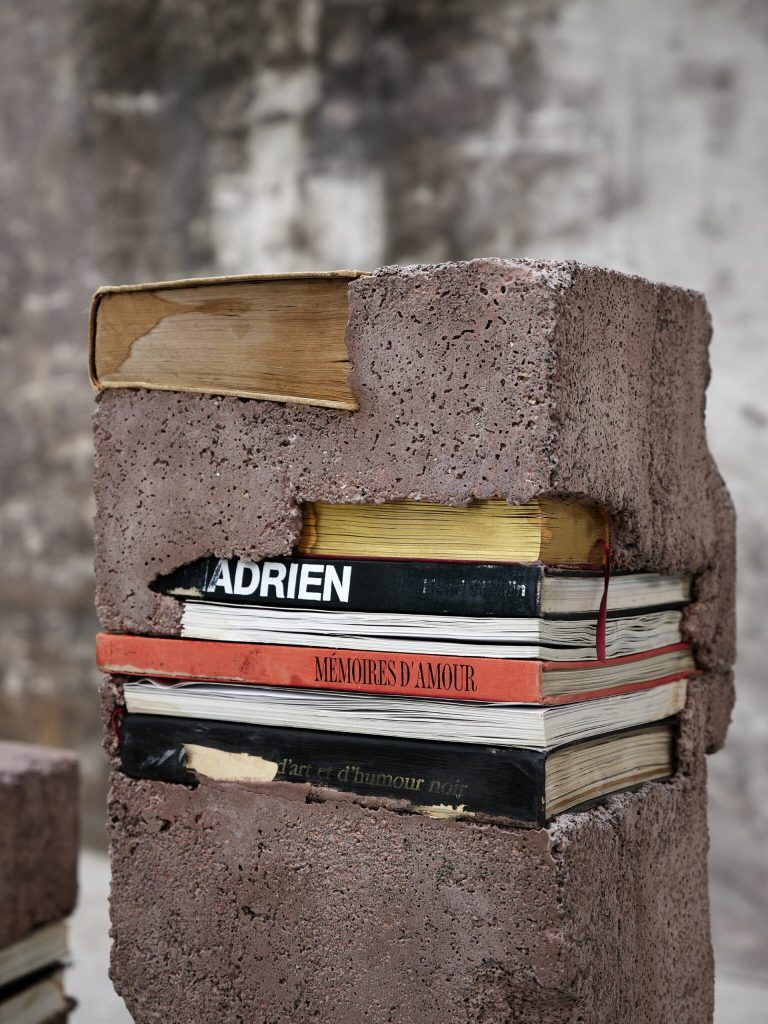At this year’s Milan Design Week, which ran from April 7 to 13, a wave of Arab designers stepped confidently into the global spotlight. Their work didn’t just add flair to one of the world’s most prestigious design events—it offered something deeper.
Blending heritage with innovation, these artists brought personal narratives to life, proving that Arab design today is rich with emotion, rooted in memory, and refreshingly bold. Let’s take a look at some of the standout exhibitions!
1. Dima Srouji (Palestine)—Hybrid Exhalations
Architect and artist Dima Srouji introduced Hybrid Exhalations, a collection that combines hand-woven bamboo with delicate, hand-blown glass. Crafted alongside the Twam family of glassmakers in Jaba’, Palestine, each piece celebrates slow design and intentional collaboration.
Srouji is channeling a craft into a story of cultural resilience. Through this fusion of materials, her work becomes both an archive and a quiet protest, holding space for memory and joy in equal measure.
2. Aline Asmar d’Amman (Lebanon)—The Power of Tenderness
Lebanese architect Aline Asmar d’Amman offered a more literary take with her collection, The Power of Tenderness, featuring Béton Littéraire and Memory of Stone.
Her pieces, including the Georgia-inspired conversation lounge and Soft Shell tables, reflect a poetic tension between raw materials and intricate detailing. For Asmar d’Amman, design is storytelling in solid form—each curve and texture carries a layered history, inviting viewers to pause and reflect.
3. Victoria Dabdoub (Jordan)—Stone Objects: A Study of Core Solids
Jordan-based designer Victoria Dabdoub made her Milan debut with Stone Objects: A Study of Core Solids, a collection of sculptural candle holders carved from limestone and accented with brass.
Produced during intimate workshops in Amman, the pieces reflect her deep appreciation for local materials and craft traditions. Dabdoub’s design language is calm and contemplative, rooted in the land yet refined in execution.
4. Jwana Hamdan (Lebanon)—Al Bustan
With Al Bustan, Lebanese designer Jwana Hamdan brought a peaceful Middle Eastern garden to the center of Milan. Her outdoor furniture—like The Wandering Majlis and the Ghaf Table—draws inspiration from Arab gathering spaces and the symbolism of desert flora.
Hamdan’s vision merges Italian design finesse with regional warmth, offering a sensory escape rooted in hospitality, connection, and calm.
5. Badih Ghanem (Lebanon)—Remember Love
In Remember Love, Badih Ghanem reimagines common objects—like a plastic chair or a gas lamp—through mirrored stainless steel. The result is a deeply reflective body of work, both literally and emotionally.
His scaled replica of the Beirut grain silos—transformed into a vase and candle holder—anchors the collection with powerful symbolism. By elevating items tied to daily life and disaster, Ghanem invites viewers to contemplate strength, fragility, and what it means to remember.
6. Richard Yasmine (Lebanon)—Divine Decadence
Richard Yasmine’s Divine Decadence is provocative in all the right ways. His collection of vases, bowls, and candleholders plays with the idea of temptation using a lavish mix of marble, stainless steel spikes, and soft jasmine flowers.
Inside each object lies a concealed mother-of-pearl rod—subtle yet striking. Yasmine’s bold contrasts challenge notions of purity and desire, all while embracing beauty that’s as emotional as it is material.
Arab Design Is Speaking Louder Than Ever
These designers aren’t simply making beautiful objects. They’re shaping a new global narrative—one where Arab design is seen, heard, and felt.
From Palestine to Lebanon to Jordan, their work proves that Arab creativity is not defined by borders but by the stories it dares to tell. At Milan Design Week 2025, those stories came through loud and clear!
WE ALSO SAID: Don’t Miss…Art Week Riyadh: The Exhibitions Redefining Saudi’s Creative Scene



